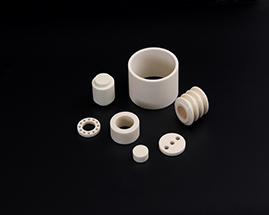Ancient Ceramics
In the Neolithic Age, humans had already begun using natural clay to make pottery, firing hard vessels through a fire. China, as the birthplace of world ceramics,
had ceramics as early as the late Neolithic period from 7000 to 8000 AD.
Traditional Ceramics
With the passage of time, ceramic technology has gradually advanced. From primitive pottery to the production of celadon in Zhejiang during the late Eastern Han
Dynasty, and then to the greater development of ceramic manufacturing in the Tang Dynasty, Chinese porcelain began to be exported overseas.
Modern Ceramics
In the 20th century, especially after World War II, ceramic materials began to develop towards inorganic non-metallic materials with special functions, including
high-temperature and functional ceramics such as oxide ceramics, piezoelectric ceramics, and metal ceramics. This period marked the beginning of the advanced ceramic stage.
Advanced Ceramics
In the second half of the 20th century, with the development of science and technology, the demand for ceramic materials became increasingly high, which led to the
development of ceramic materials into a series of advanced ceramics with special functions. These ceramics have made significant progress in forming and sintering
techniques, including isostatic pressing, hot pressing injection molding, injection molding, centrifugal injection molding, pressure injection molding, as well as sintering
techniques such as hot pressing sintering, hot isostatic pressing sintering, reaction sintering, rapid sintering, microwave sintering, and self propagating sintering.
Nanoceramics
In the 1990s, ceramic research entered the stage of nanoceramics, during which ceramic materials reached the nanoscale in microstructure, with significantly improved
strength, toughness, and superplasticity.
Modern applications
In the 21st century, the application fields of advanced ceramics are becoming increasingly widespread, not only in traditional industrial fields such as chemical metallurgy,
mechanical manufacturing, power electronics, energy and environmental protection, but also in cutting-edge technology fields and new industries such as aerospace,
communication electronics, semiconductor microelectronics, biomedicine, national defense and military industry, high-speed rail, and new energy vehicles.
Industrial distribution
China's advanced ceramic industry is mainly concentrated in provinces such as Shandong, Jiangxi, Guangdong, Jiangsu, Zhejiang, Hebei, and Fujian. Among them,
Guangdong, Jiangsu, and Shandong have high industrial concentration and strong competitiveness.
Policy and Market
The Chinese government is also actively promoting the development of the ceramic industry, through policy support and market guidance, promoting the development
of the special ceramic.
Future trends
With the continuous progress of technology and the exploration of new applications, industrial ceramics are expected to continue to develop towards higher performance and
multifunctionality to meet the needs of future industry and technology.

If you have any questions or need help, feel free to contact with our team.
Phone
+86 183 5248 9056
Location
Qianluo Village, Dingshu Town, Yixing City, Jiangsu Province, China
Welcome to subscribe to our email message!


Copyright © Yixing Shengda Refractory Ceramic Co., Ltd. All Rights Reserved | Sitemap | Powered By 